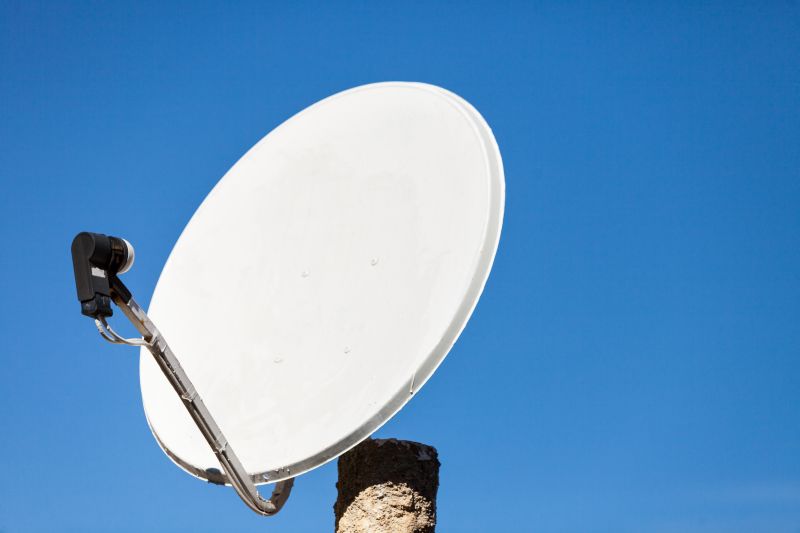Expert Picks for Satellite Dish Removal Equipment and Accessories
Get insights into the most effective tools and parts to streamline your satellite dish removal process with confidence.
 Removing a satellite dish can be a straightforward process when equipped with the right tools and accessories. Proper removal not only ensures safety but also helps prevent damage to your property or the dish itself. Whether you are upgrading your satellite system, relocating the dish, or performing maintenance, selecting suitable products is essential for a smooth experience. From specialized wrenches to mounting brackets and safety gear, there are numerous options designed to facilitate every step of the removal process.
Removing a satellite dish can be a straightforward process when equipped with the right tools and accessories. Proper removal not only ensures safety but also helps prevent damage to your property or the dish itself. Whether you are upgrading your satellite system, relocating the dish, or performing maintenance, selecting suitable products is essential for a smooth experience. From specialized wrenches to mounting brackets and safety gear, there are numerous options designed to facilitate every step of the removal process.
Top Overall Option
Satellite Dish Removal Kit
A complete satellite dish removal kit typically includes a variety of tools such as wrenches, screwdrivers, pry bars, and safety gear. These kits are designed to provide everything needed for safe and efficient disassembly, making them a versatile choice for both amateurs and professionals. They often come with detailed instructions to facilitate proper removal and handling of different mounting systems. Using a dedicated kit can help ensure that all components are addressed systematically, reducing the risk of damage or injury.
Types of Products For Satellite Dish Removals
Wrenches and Socket Sets
Specialized wrenches and socket sets designed for removing bolts and nuts from satellite mounts.
Screwdrivers and Nut Drivers
Variety of screwdrivers suitable for different screw types used in dish mounting hardware.
Pry Bars and Crowbars
Tools used to gently pry and dislodge stubborn brackets or mounts.
Cable Cutters and Strippers
Tools for safely cutting and stripping satellite cables during removal.
Safety Harnesses and Gloves
Protective gear essential for working at heights and handling heavy equipment.
Ladders and Scaffolding
Support equipment to access high-mounted dishes safely.
Transport and Storage Containers
Durable containers for storing or transporting removed dish components.
Power Drills and Impact Drivers
Power tools to quickly remove screws and bolts securing the dish.
Roof and Wall Anchors
Additional hardware for securing or re-securing dishes during reinstallation.
Cable Management Tools
Clips, ties, and organizers to manage cables during removal and future setups.
Popular Choices
Versatile tools including oscillating tools, saws, and cutters suitable for various removal tasks.
Robust wrench sets designed to handle large bolts and stubborn mounts.
Extendable ladders for accessing high-mounted satellite dishes safely.
Powerful cordless tools for fast removal of mounting hardware.
Specialized tools for safely disconnecting and removing satellite cables.
Durable gloves to protect hands during disassembly.
Head protection for working at heights or around heavy equipment.
Tools designed to assist in safely handling dishes on rooftops.
Tools to retrieve dropped hardware or components from hard-to-reach areas.
Tools designed to cut or remove cable ties cleanly and efficiently.
Lighting solutions for visibility in dim or outdoor work environments.
Specialized gloves to improve grip and protect during removal tasks.
Equipment for securing yourself during rooftop work.
Knives for cutting through cable sheathing or mounting materials.
Equipment for moving large or heavy satellite dishes safely.
Water-resistant bags for storing components during outdoor removal.
Clips to organize and secure cables during removal or reinstallation.
A key aspect of satellite dish removal involves detaching the dish from its mount and safely lowering it from the roof or wall. This often requires tools that can handle various mounting hardware types, including bolts, screws, and clamps. Additionally, some removal tasks may involve cutting through cable ties or securing brackets, making the right utility knives or prying tools valuable. Safety considerations such as harnesses, gloves, and eye protection are also important, especially when working at heights or with heavy equipment.
After disassembly, proper disposal or storage of the dish is recommended. Many products are designed to help with safe handling and transport, reducing the risk of injury or property damage. For those planning to reuse or repurpose the dish, storage solutions like protective covers or containers can be useful. Overall, having a comprehensive set of removal tools tailored for satellite dishes can streamline the process, making it safer and more efficient for both DIY enthusiasts and professional technicians.
Key Buying Considerations
- Compatibility with your specific satellite dish mounting hardware.
- The weight and size of the dish to determine appropriate tools and safety equipment.
- Ease of use and ergonomic design for comfortable handling during removal.
- Durability and quality of materials to withstand outdoor conditions and heavy use.
- Availability of safety features such as harness attachment points or gloves.
- Compatibility with existing tools or whether a complete removal kit is more suitable.
- Portability of tools for working in various locations, including rooftops or elevated areas.
- Storage options for tools and removed components to keep everything organized.
- Ease of disassembly for different mounting types, such as wall mounts or roof brackets.
- Availability of instructions or guides for complex removal procedures.
- Cost-effectiveness relative to the scope of your removal project.
- Brand reputation and customer reviews for reliability and performance.
- Potential for future re-use of components or parts.
- Compatibility with other maintenance or upgrade tools you may already own.
- Environmental conditions where you'll be working, such as wind or rain exposure.
